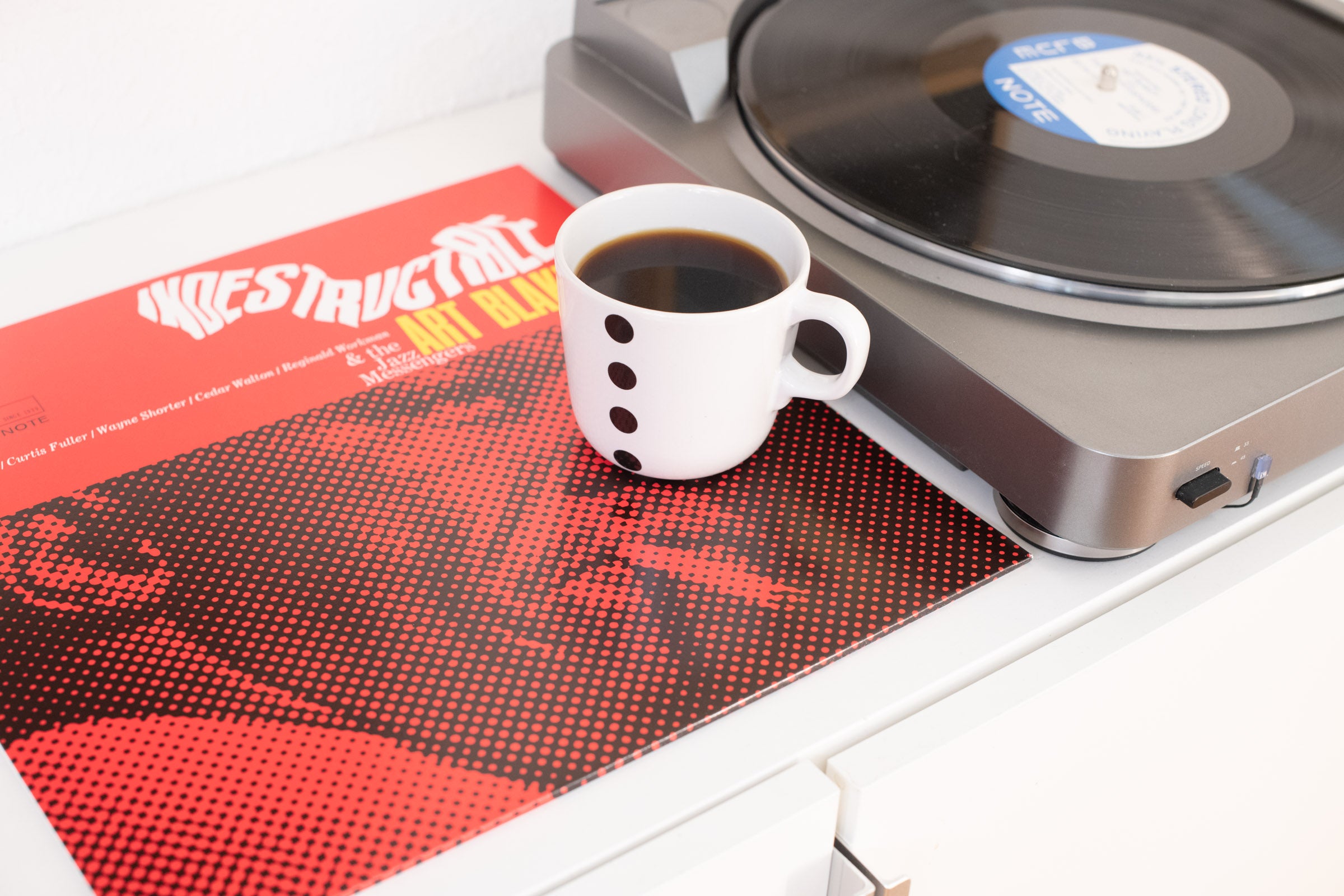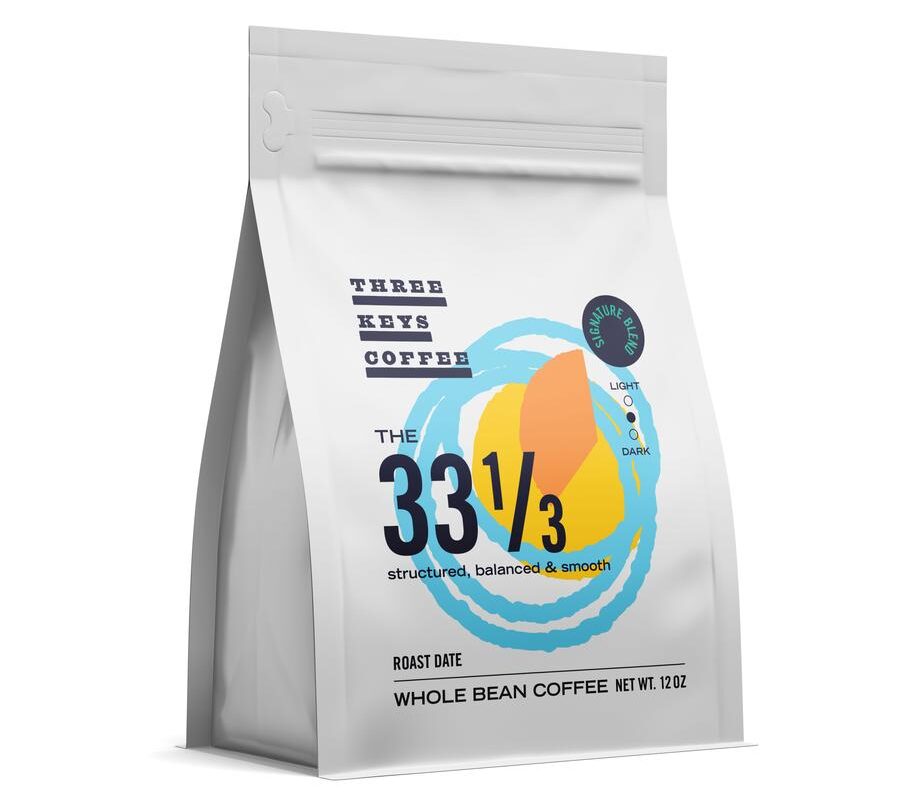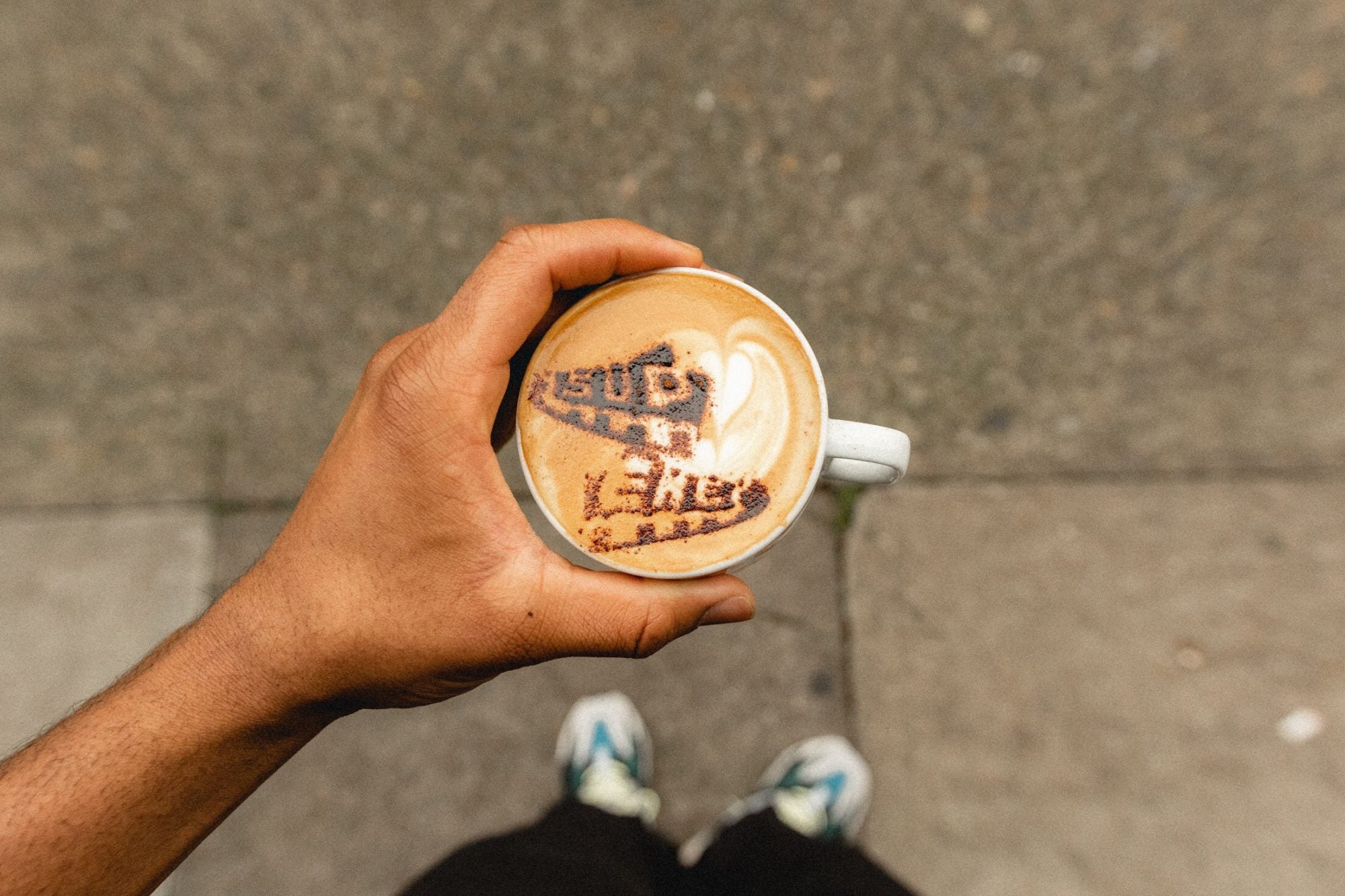
You can’t buy a bag of coffee without hearing about tasting notes. Those notes are unreasonable.
Every barista has a version of this story: You’re working behind the bar, pulling cortados or scooping ice for constant orders of cold brew, and a customer comes in to pick up a bag of coffee. They browse the shelf of choices—debating between a lovely selection from Mexico or a fresh new Ethiopian naturally processed coffee—before picking up a bag, walking to the register, and asking: “This bag says the coffee tastes like blueberries. Is it blueberry-flavored?”
Nearly every bag of coffee comes with some version of tasting notes, a short list of descriptors varying from vague flavor sensations (“this coffee is sweet!”) to obscurely specific (“this reminds me of Swiss German cake my grandmother used to make me as a child”). Distinct from flavored coffee—and yes, there are blueberry-flavored coffees, made using artificial flavorings added to coffee after it’s roasted—tasting notes are meant to give drinkers an idea of what naturally occurring flavors to expect after grinding and V60ing their coffee at home.
And yet, as a former barista—and now as a coffee writer who hosts a podcast called Boss Barista—I often find that tasting notes set consumers up to fail. If I handed a consumer a pour-over menu, they’d be turned off by coffees with notes like “citrus” or “lime,” not wanting a coffee that tastes acidic, like an unbalanced glass of lemonade. I’ve answered emails from folks who “didn’t get the cinnamon note” clearly printed on the bag, asking if they brewed their coffee wrong.
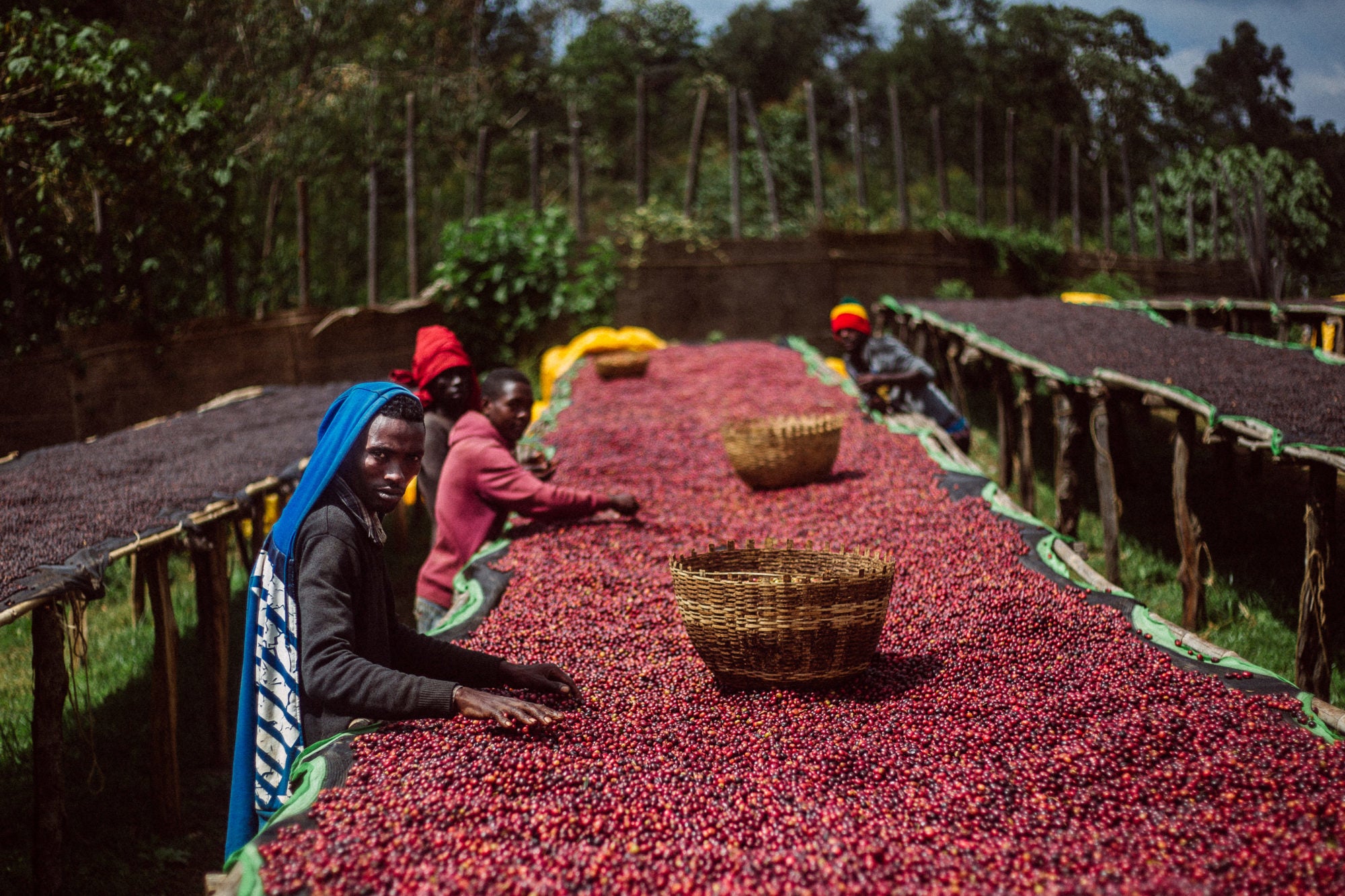
Natural coffees being sorted and drying in the sun on a coffee farm in the Guji Zone of southern Ethiopia.
Perhaps this is because tasting notes were never meant for consumers in the first place. When coffee buyers and Q graders—certified coffee tasters, kind of like coffee sommeliers—come together and taste coffee, they often go through an informal process called “calibration,” or the methodical approach to tasting and discussing coffee to develop a shared understanding that will ultimately find a uniform point of view. “We’ll start a Q course with a calibration table, and people will be all over the map,” says Sandra Elisa Loofbourow, a certified Q instructor and the director of the Good Food Awards at the Good Food Foundation. “But just through the exercise of talking through everyone’s experience at the cupping table, by the second cupping, there’s this incredible drift toward the center where, all of a sudden, everyone’s in calibration. It happens really quickly and really organically.”
Calibration is key to talking about coffees and evaluating them as objectively as possible. The Q certification program is essentially a regimented calibration process and allows actors across the supply chain to develop a shared vocabulary among one another. Calibration happens everywhere in coffee and is the bedrock for assessing quality. Before 2022 US Barista Champion Morgan Eckroth performed their winning coffee presentation for a panel of four sensory judges plus a head judge, the judges did behind-the-scenes work of calibrating together, which usually involves drinking sample coffees and discussing them out loud with a head judge to guide the conversation and force judges to articulate what they’re tasting and why. For example, if a head judge brings the panel a shot of espresso with notes of “orange” and “chocolate,” and three of the four judges on a panel get those flavors (they rate the accuracy of tasting notes on a scale of one to six), it’s the responsibility of the head judge to ask questions to figure out why: What kind of acidity did you taste? Did you focus on the finish, where the lingering chocolate note might be?
The word “calibration” has become barista shorthand for being on the same page or reading a situation in a similar light—if you listen closely the next time you’re in a cafe, you might overhear baristas celebrating an agreement of some kind by yelling, “Calibrated!”
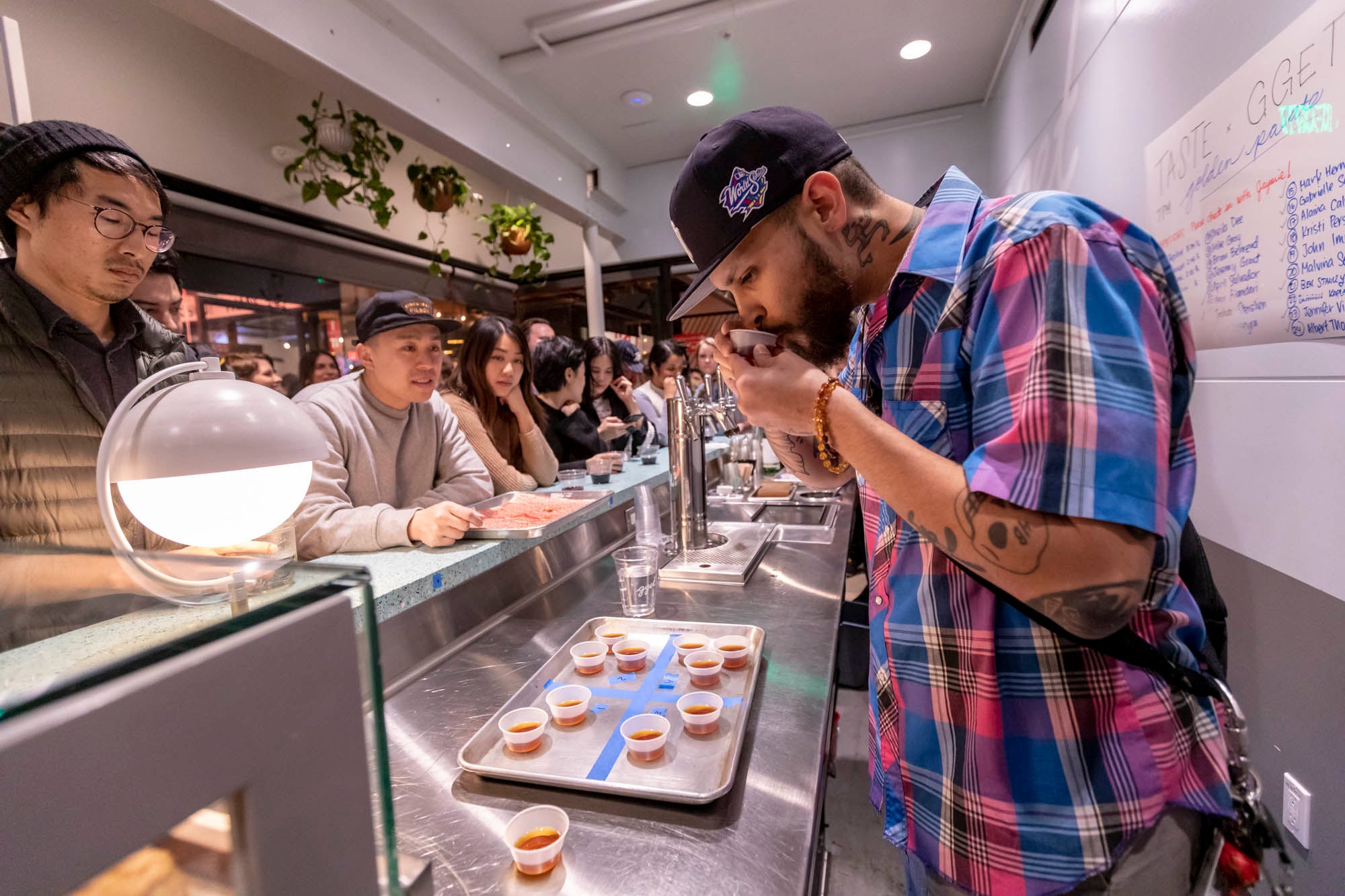
Coffee pro Nicely Abel tasting coffee at the TASTE Coffee Issue launch party at Go Get Em Tiger in Los Angeles.
But most consumers will never get the chance to calibrate with their baristas: they simply take home a bag of beans and try their best to nail their home brew. “Tasting notes are helpful in calibrating with other people that you work with,” says Umeko Motoyoshi of Umeshiso Coffee Supply. “But if you’re not on a quality assurance team, you’re simply a customer purchasing a bag of coffee, and you’re reading notes on the bag of coffee that say this will taste like a certain thing, you’re not calibrated to that team!” Motoyoshi adds that it’s highly unlikely you will taste what the team tastes—notes of strawberry, stone fruit, and molasses, for example—and it doesn’t mean you’re wrong. Tasting notes are based on your own experiences.
Motoyoshi is the owner of umeshiso.com and sells colorful coffee gear, most notably rainbow spoons. They recall one of their first experiences exploring tasting notes: “I remember when I first started as a barista, I was visiting a cafe and talking to a coffee roaster about the espresso blend. And I said, ‘This coffee has notes of pine,’ and the roaster—this old white guy—was like, ‘No, what you’re tasting is cedar.’”
“The idea that there’s one way to taste coffee and that someone is right while others are wrong is part of the gatekeeping culture in coffee.”
A few years ago, Motoyoshi made a sticker for their website that read “tasting notes are opinions” (it’s sold out now) to challenge the dogmatic approach they saw to tasting coffee. “The idea that there’s one way to taste coffee, and that someone is right while others are wrong, is part of the gatekeeping culture in coffee,” they say. “What you taste in a coffee is so informed by your own personal experiences, by what’s in your sensory memory bank and what you grew up eating—and we all grew up eating different foods. There is really no objective truth about what tasting notes are present in a coffee.”
Although tasting notes are highly subjective, that doesn’t mean the average coffee drinker or third-wave fanboy can’t work to get closer to comprehending what your favorite roaster means when they describe a coffee as “candy sweet” or having “stone fruit–like acidity.” As Loofbourow described above, calibration can happen quickly, so even just by asking your local barista what they taste in a cup of coffee—and trying to identify these flavors for yourself, which you should think about much more as developing a muscle than answering a question right—even a few visits to a particular coffee shop can help you build an understanding of a coffee’s inherent flavor with your favorite barista. True coffee enthusiasts can take that to the next level by attending coffee tastings and registering for classes through their local roastery.
Tasting notes can also be confusing because they’re often listed as foods from varying (and sometimes opposing) flavor categories competing on your tongue for prominence; we cannot taste all flavors with the same intensity. This leads to the concept of sweetness, which can be hard to parse out even though it is often the foundational tasting note—the delta factor that all roasters, baristas, and coffee professionals strive for. “Coffee is inherently super bitter,” says Loofbourow. “It has caffeine, caffeic acid, chlorogenic acid—all of which are bitter. There’s a lot of stuff competing with that sweetness.” Sweetness is the balance of everything—and I don’t mean sweet from added sugar or flavors, but the sensation that what you’re tasting tastes good and the flavors pop. It’s the difference between a wine that tastes harsh and alcoholic versus dynamic and round. It’s the difference between an underripe and a perfectly ripened strawberry. In coffee, sweetness is the difference between quality product, a thing grown, made, and processed well to allow the best expression of itself, versus one without character. A coffee without sweetness just tastes bitter and flat.
During one of the tests to become a Q grader, instructors like Loofbourow will help tasters build their skills by separating out the flavors inherent in coffee. For example, part of the Q grading process involves testing samples of water mixed with very diluted concentrations of things like sugar (sweet), table salt (salt), and citric acid (sour) to train tasters how to identify each flavor. To achieve the same level of intensity in each solution, you’d have to use 2 grams of salt, 3 grams of citric acid, and 15 grams of sugar (for a two-liter solution). This test is not about assessing intensity but about understanding our individual thresholds for each of these flavors—and it turns out we’re much less prone to detecting sweetness than other competing flavors. Sweetness is the flavor grail that all coffee roasters and baristas strive for.
That’s because sweetness is required of any coffee that’s considered specialty-grade, says Loofbourow. “When we teach Q grading courses for Arabica coffee, we teach that sweetness is a binary. You aren’t evaluating sweetness as an attribute on a scale of one to ten the way you do other things like flavor and aftertaste. Rather, the assumption for specialty Arabica beans is yes, they are sweet. And if it’s not sweet, then it is not specialty.”
Even though sweetness is required of specialty coffee—a term that sounds exclusive but includes, among the coffees you’d find at small, independent coffee shops, almost all the coffees bought by brands like Starbucks, Nestlé, and McDonald’s—it’s still a hard thing to taste, made even harder by the inundation of tasting notes that can feel oddly specific.
But many roasters are working to let consumers know tasting notes are, as Motoyoshi says, opinions. “We let people know that tasting notes are an impression and to avoid getting wrapped up in what the notes say. It’s a snapshot, an impression of the coffee,” says Mandy Spirito, cofounder of Vignette Coffee in Greensboro, North Carolina. “So when we’re coming up with notes regarding sweetness, we think about flavors that resonate.”
Mandy and their cofounder and partner, Michael Harwood, use the words “we taste” before listing any flavor notes on their website. They also host public tastings where people can interact and talk about the flavors they’re experiencing. “As with professionals, the best way for coffee drinkers to understand sweetness is to taste coffee with others and share their experience. Public tasting events, rotating menus, and education-forward bar work all facilitate these moments,” says Harwood. “Educating guests on sweetness’s providence helps too. Sharing insights about the ripeness of harvest, sorting and removal of defects, roasting sugars, and extraction all slowly build an appreciation for sweetness in coffee.”
Vignette is a new roastery, and Spirito and Harwood plan to keep tasting notes “broad and minimal” (for one of the blends, a medium-roast coffee called Golden Key, they say, “We taste: chocolate, caramel, black cherry.”). Others have taken creative approaches to describing beans: LA-based Couplet Coffee uses—aptly—couplets, or two-line pieces of poetry, like this one for a single-origin Peruvian coffee: “tangy, funky, and bright, Couplet’s Peruvian feels like a beam of light.” And the team at Three Keys Coffee in Houston uses music to convey the feeling they hope drinkers experience when they taste a coffee.
“We think music is universal,” says Tio Fallen, one of the cofounders of Three Keys. “Specifically jazz,” says Kenzel Fallen. Kenzel grew up playing the violin and listening to old vinyl records on her mom’s turntable as a kid, while Tio played trumpet throughout his life—the name Three Keys refers to the three keys on a trumpet—idolizing fellow trumpet players like Miles Davis and Dizzy Gillespie. “There are no words,” says Kenzel. “I mean, yes, there are some vocal jazz songs, but for the most part, you have the instruments speaking. There are no language barriers. There are no translation issues. It’s all about how the music makes you feel.”
The husband-wife duo ascribe styles of jazz and instrumental music to their coffees, like a Colombian coffee that reminds them of the fast pace of cumbia music (“Cumbia often invokes the idea of fast rhythms and colorful dances, and this coffee is the perfect representation of both,” they write on their website. “The fruit you taste from this natural process is melodic, purposeful, and seductive”). They’ve even made a riff on the Specialty Coffee Association’s Coffee Taster’s Flavor Wheel—a common tool tasters use to evaluate coffee—by adding layers to create a multisensory experience. A bright, upbeat coffee might hearken back to the music of Ella Fitzgerald, while a coffee that’s too darkly roasted might feel flat, or even jarring, like an instrument out of tune.
“It’s about connecting multiple senses,” says Kenzel, “rather than having people hang on to a particular flavor note.”
5 EXCITING COFFEE ROASTERS TO TRY:
Spirito and Harwood met on a coffee sourcing trip to Guatemala in 2018 and launched Vignette Coffee just weeks ago. Both are coffee veterans: Spirito was formerly the head roaster for Wrecking Ball Coffee Roasters in San Francisco and the green coffee buyer and head roaster for Halfwit Coffee Roasters in Chicago and Little Waves Coffee Roasters in North Carolina, while Harwood is an experienced coffee trainer and champion barista competitor. Try any one of their blends, which they’ve cleverly divided into categories based on roast level.
Couplet Coffee was started by Gefen Skolnick, who left the tech world to follow her passion for making coffee accessible. The brand, whose motto is “Coffee for F—— Everyone,” is colorful and inviting. But if you’re coming for the coffee, you’ll stay for their irreverent social media presence—no one in coffee uses TikTok like Skolnick does.
Reading the tasting notes Gabe Boscana writes for Máquina Coffee is like having him right next to you. Boscana has bought and roasted coffee for almost every big-name coffee company: Ritual and Sightglass in San Francisco; Gimme! Coffee in Ithaca, New York; Intelligentsia in Chicago. Máquina is a quiet return to Boscana’s real mission: to honor the people and places who grow the coffees you love, and his tasting notes often feel like personal scribbles and morning reflections.
The team at Three Keys Coffee wants you to know coffee is a feeling, tied to many sensations. They describe their brand as “If Dizzy, Basquiat, and Elijah McCoy roasted coffee,” and they include playlists for many of their coffees. They connect every coffee they roast to a style of music or an iconic album: an Ethiopian Guji coffee that tastes like strawberry pound cake, and sugar cane reminds them of Mulatu Astatke, an Ethiopian musician considered the father of “Ethio-jazz.”
Every coffee is carefully curated at Yes Plz, a Los Angeles–based subscription service helmed by roasting greats Tony “Tonx” Konecny and Sumi Ali that makes just one promise: to pursue the perfect cup. Each of Yes Plz’s coffee releases is different: a drop called “Cake for Breakfast” combined coffees from Mexico, Guatemala, and Honduras that they describe as “biting into a Black Forest chocolate cake with cherry frosting”; another called “Raspberry Beret” is bursting with berry flavors.
Photos: Dylan + Jeni, Eyal Yassky-Weiss, Neal Santos, Jacob Layman.
